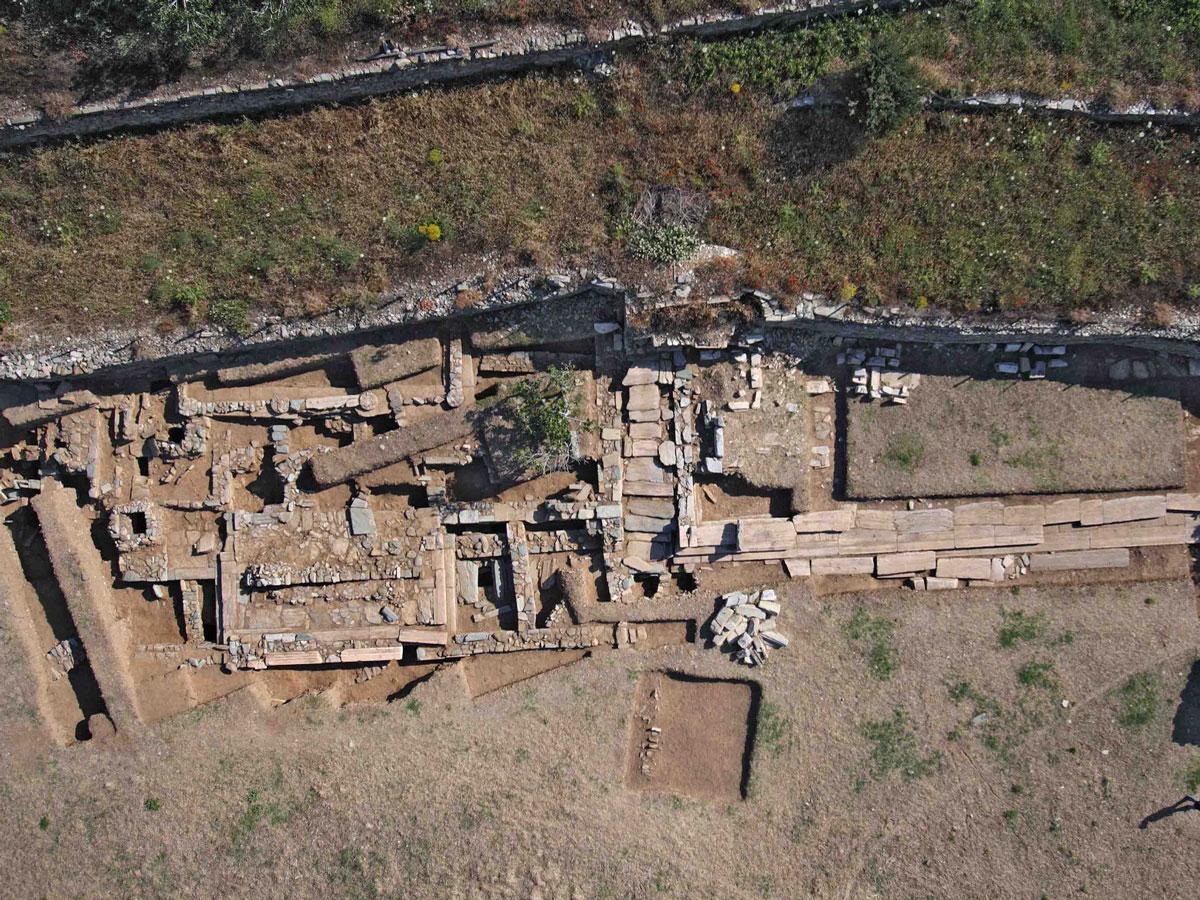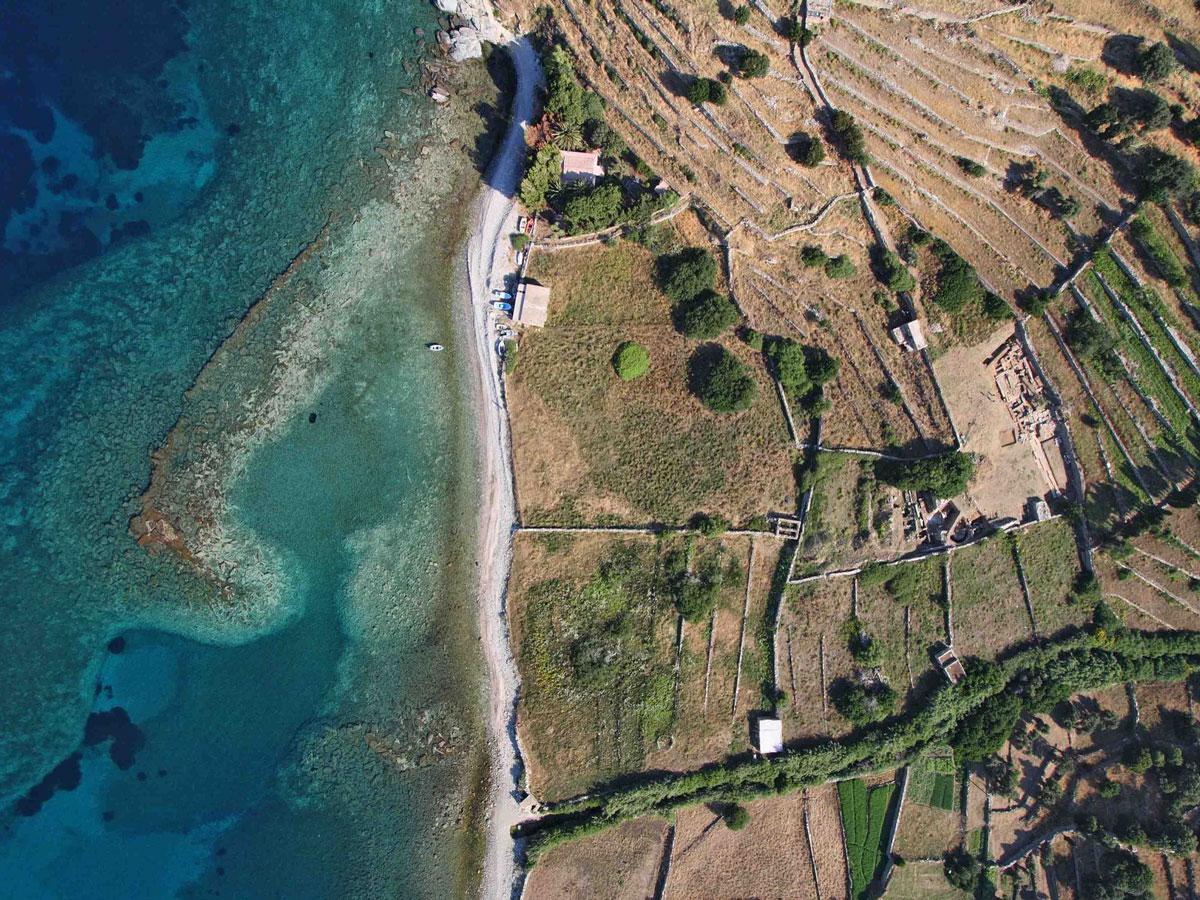Archaeological Site of Palaiopolis

Archaeological Site of Palaiopolis in Andros
Palaiopolis was the ancient capital of Andros and the only city on the island during the Classical Era. It was founded in the 7th-6th century BC and flourished, but it was destroyed by an earthquake in the 4th century AD and a part of it sank into the sea. From the ancient city survives the wall, the sanctuaries, a temple dedicated to Pythian Apollo (late 6th century BC), who was worshipped as the main deity along with Dionysus in Andros, cemeteries, etc. Today it is a beautiful green village on the slope of Mount Petalo. The ancient city was much lower, close to the port, the half-submerged pier of which can be seen from the village. The archaeological excavations began in 1987 and continue to this day.

This is where Kouros comes from, which adorns the Archaeological Museum of Andros and perhaps a Kore, located in Copenhagen. Archaeological excavations have revealed the city of classical times with its purchase, parts of three paved roads and two galleries, sewerage and irrigation network and the most important thing is that its inhabitants knew the processing of metals. So they could exploit the mineral wealth.
The Archaeological Site of Palaiopolis during the excavation has brought to light houses of the first Christian centuries, as well as a three-aisled basilica, which is preserved in good condition at a height of up to three meters. It is possible that the temple was destroyed by the great earthquake of 552 of the Eastern Mediterranean, when it was replaced by a smaller one. In 2009, a mosaic floor was discovered in the central aisle of the 5th century basilica with the names of its two founders, who were called: Efrosinos and Maria. The findings are housed in the archaeological museum of Palaiopolis.

